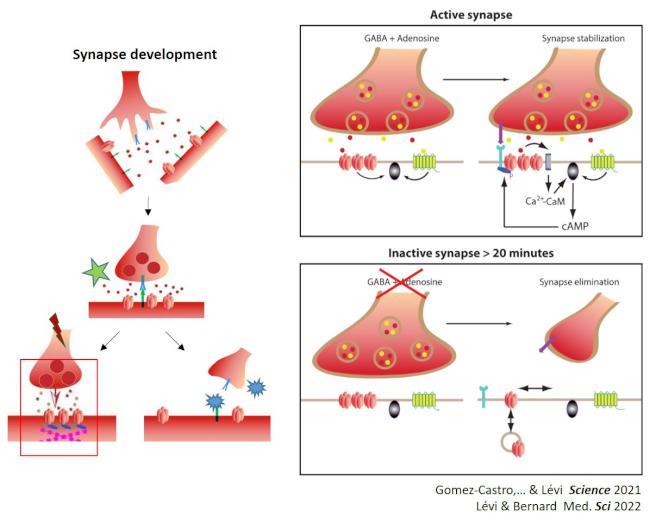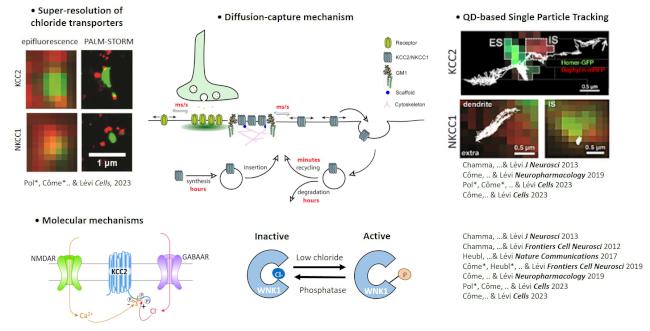Development : We have shown that A2A adenosine receptors control the fate of nascent GABAergic synapses : the A2A receptor acts as an activity sensor to stabilize active GABAergic synapses capable of releasing GABA and ATP, whereas inactive synapses are rapidly eliminated. We have shed light on the molecular mechanism at play.

Plasticity of mature synapses : In recent years, we have demonstrated the importance of the ’diffusion-capture’ mechanism in the rapid and plastic regulation of GABAA receptors at inhibitory synapses, as well as the chloride transporters KCC2 and NKCC1, which control chloride homeostasis and thus GABAergic transmission. We then looked for mechanisms that regulate the diffusion-capture and thus the function of GABAA receptors and chloride transporters. This enabled us to highlight :
• The impact of conformational changes in the GABAA receptors under physiological (e.g. during opening, desensitization, etc.) or pathological conditions (e.g. human mutation associated with epilepsy) as well as in gephyrin, the main scaffolding protein at inhibitory synapses (e.g. through phosphoregulation) ;
• Different dynamic behaviors between KCC2 and NKCC1 and the molecular mechanisms enabling rapid regulation of their membrane stability and thus of neuronal chloride homeostasis ;
• In the search for new mechanisms controlling the inhibitory synapse, we have demonstrated the contribution of chloride as a secondary messenger capable of activating the WNK/SPAK kinases, which act as main regulators of the inhibitory synapse by regulating both KCC2 and NKCC1. This makes this pathway a target of interest in pathologies where inhibition is impaired, such as epilepsy, psychiatric disorders and stress.



